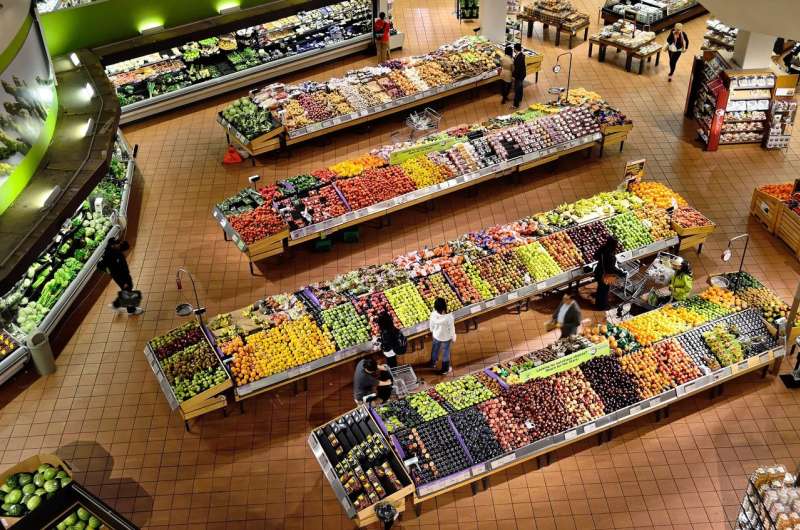Changing product offerings in shops and restaurants can lead to leaner, greener diets


Changing the assortment of food and drink products on offer in shops, restaurants and bars has the potential to improve diets, reduce inequalities and protect the environment, say researchers in The BMJ today.
These types of measures are called availability interventions. Examples include replacing some of the confectionery items on offer with fruit or nuts; sugary drinks with no or low sugar options; alcoholic with non-alcoholic drinks; and meat based with plant-based meals.
Theresa Marteau at the University of Cambridge and colleagues explain that suboptimal diets—particularly the consumption of energy-dense foods, meat, and alcohol—are one of the largest contributors to premature death and preventable diseases worldwide, contributing also to health inequalities and environmental harm.
Along with measures such as higher taxes and marketing restrictions on unhealthy products, they say availability interventions also have the potential to contribute to population health and net zero goals. But they remain largely overlooked by policy makers.
So they set out to summarize the evidence supporting availability interventions in a form useful to policy makers. They searched the scientific literature to update a Cochrane review published in 2019 and identified nine real world studies (including four new studies) showing consistent and often substantial effects of availability interventions on consumer selection of healthier or more sustainable options, with no evidence of adverse effects, including increasing health inequalities.
For example, increasing the proportion of vegetarian meal options in a cafeteria from 25% to 50% decreased the selection of meat meals by almost eight percentage points (from 81% to 73%).
Similarly, increasing the proportion of lower energy food options available in cafeterias from 42% to 50% reduced the calories purchased per transaction by almost five percent compared with baseline (from 384 to 366 kcal).
And early results from a study of online supermarket purchases suggest that decreasing the proportion of alcoholic drinks available from 75% to 50% and 25% increased the proportion of non-alcoholic beers and wines and soft drinks selected from 24% to 32% and 45% respectively.
The authors acknowledge some uncertainties, such as whether these findings can be applied to low- and middle-income countries, and the impact of population preferences (social norms) on what we eat.
And they point to challenges that they say may contribute to the relative neglect of these interventions, such as not fitting with the dominant public discourse around personal responsibility for unhealthy behavior, and resistance by businesses fearing loss of sales.
Nevertheless, they say their findings “should help highlight the opportunities for including [availability interventions] in strategies promoting health and sustainability.”
Source: Read Full Article